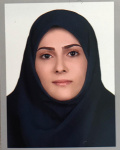| Authors | Nafiseh Sharifi, Ali Dabirian, Davood Danaei and Nima Taghavinia |
|---|---|
| Journal | Journal of Optics |
| Paper Type | Full Paper |
| Published At | 2016 |
| Journal Grade | ISI |
| Journal Type | Typographic |
| Journal Country | Iran, Islamic Republic Of |
Abstract
Metallic nanoparticles (NPs) have not been effective in improving the overall performance of the cells with micrometer-thick absorbing layers mainly due to the parasitic optical dissipation in the metal. Here, using both experiment and theory, we demonstrate that aggregates of metallic NPs enhance the light absorption of dye-sensitized solar cells of a few micrometer-thick light absorbing layers. The composite electrode containing the optimal concentration of 5wt% Au@SiO2 aggregates shows the enhancement of 80% and 52% in external quantum efficiency and photocurrent density, respectively. The superior performance of the aggregates relative to NP is attributed to their larger scattering efficiency using full-wave optical simulations. This is further confirmed by optical spectroscopic measurements showing that a large fraction of the incident light couples into the diffused components because of the presence of these metallic aggregates. The optical absorption enhancement is broadband and it is particularly strong at wavelengths larger than 680nm where the optical absorption of dye molecules is weak.
